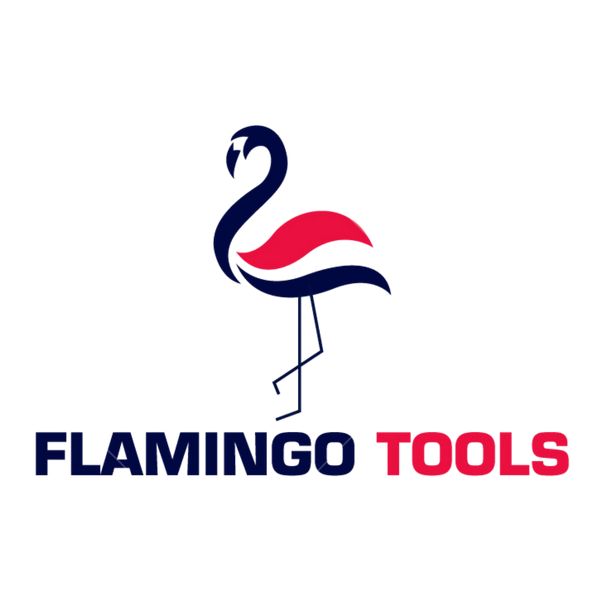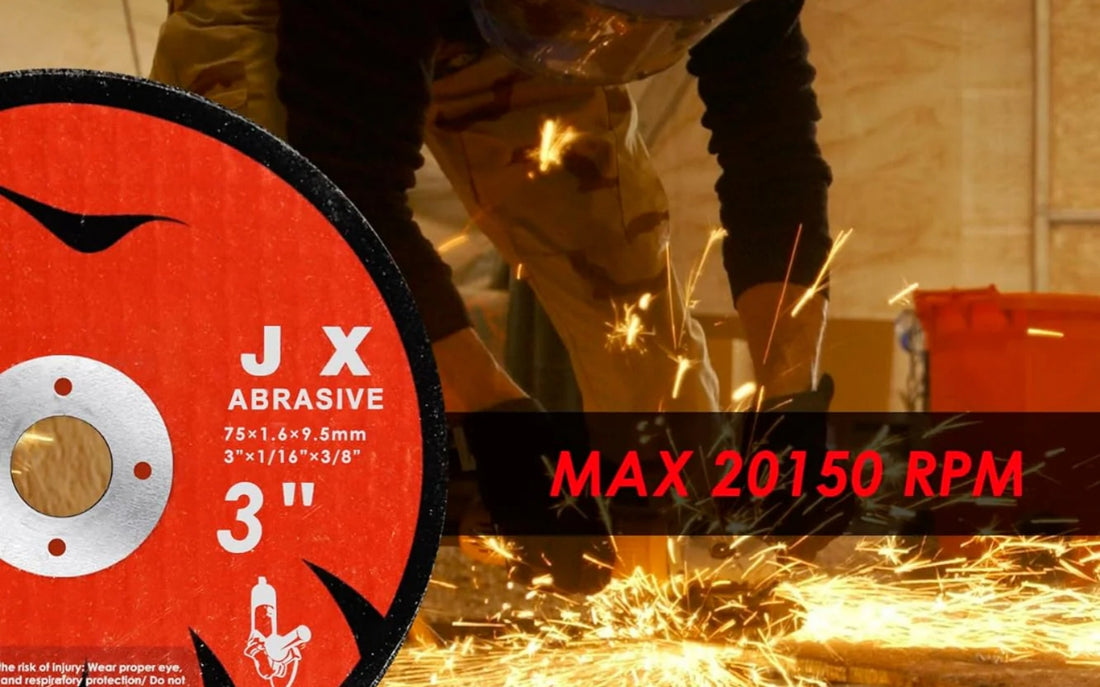Reducing the risk: how to avoid wheel breakage accidents
Portable cutting wheels are indispensable tools for quickly cutting through all types of materials, but overuse can cause serious hazards. Adhering to proper safety practices is critical to ensuring effectiveness and safety. The following is a detailed compilation of basic precautions for effective use of portable cutting wheels:

It is important to remember that cheaper cut-off wheels typically indicate cutting wheels made with lower quality grinding grains and pads. Using low quality abrasives that use fillers often requires more wheels to do a job which, in the long run, would offset any initial cost savings. The increased risk of failure or accidents on purchased cut-off wheels with frequent changes goes far beyond the perceived “value” of low quality wheels. Like anything else, you do get what you pay for. When safe and reliable performance is important, you will want to use high quality abrasive solutions including high quality abrasives and high quality fiberglass reinforcement materials such as flamingotools cut-off wheels and flamingotool grinding wheels .
Safety Recommendations for Universal Cutting Wheels
Using proper guarding devices: Installing the correct guarding devices on tools is an important part of safe use of cutting wheels. The right angle grinder is the most commonly used tool with cutting wheels and is usually only equipped with grinding guards. However, the cutting wheel requires a one and a half month cutting guard device and 180 degree coverage to provide additional protection to the user. Using grinding guards with flat type f41 cutting wheels or recessed type f42 center cutting wheels does not provide additional protection. To make matters worse, no tool guards were used at all. When using the cutting wheel, be sure to keep the proper guard in place.

- Paying attention to the condition of cutting wheels and following best practices is critical to the safe and effective use of these products.
- Wear the necessary personal protective equipment (PPE): Wear personal protective equipment when using cutting wheels. Personal protective equipment includes safety glasses, face masks, ear muffs, gloves, fire-resistant clothing, leather aprons, and safety shoes. Safety helmet and/or welding helmet can also protect the head from sparks while cutting metal.
- Visual Inspection: Check the cutting wheels and tools before using them. In case of cracks or other signs of wear or damage, replace with new wheels. Even if the wheel is still on the tool, the tool may have been dropped or knocked off the shelf, so it is important to check for damage before using it. Also, before using the tool, jog for a few seconds to make sure it is working properly.
- Correct Wheel Installation: Most cut-off wheels have a stamped metal ring around the hub. When installing the grinding wheel, the stamped insert should face the main shaft on the motor side of the knife. This will provide a smoother installation as sand grains or abrasive fragments are less likely to appear on the wheel side.
- Workpiece Securing: Make sure the workpiece is firmly clamped or held in place by a collet, so that once you start cutting, it will not move, bend or roll. If the workpiece moves during cutting, it may distort and clamp the wheel, which may cause the wheel to break.
- Do not bend the cutting wheel: During cutting, do not attempt to bend or flex the cutting wheel to make the curved cut. This introduces lateral loads and may cause the wheel to break.
- Never use the Cut-off wheel for grinding: The Cut-off wheel does not have a fiberglass reinforced material like the grinding wheel, so using the Cut-off wheel for grinding can be dangerous. Cutting can only be done with Cut-off wheels. Combination wheels can be used for cutting and grinding and marking accordingly.
- Do not push the wheel through the cut - the cut wheel should only have the weight of the tool as it passes through the cut. Forcing the wheel with unnecessary pressure can cause the wheel to slip and bind; excessive pressure also shortens the life of the product.
- Using better abrasives for harder materials: Some specialty metals, such as titanium or inconel alloys, can be difficult to cut. In these cases, cutting wheels with higher-performance abrasive grains, such as ceramic, are selected. This helps you cut efficiently and reduces the chance of wheel vitrification due to overheating.
- Observe the spark path: Any type of cutting wheel produces sparks. The spark path can be changed depending on the method used to cut. Pay attention to the spark path and any objects that could be damaged or coworkers in the area.
Best practices for cutting wheels of different diameters

| Type of cutting wheel | Description | Best practices |
| Small diameter | (diameter ≤ 100mm, center shaft hole 6 - 10mm) |
- clamping points for metal fabrication. |
|
Standard diameter |
(diameter: 100 - 230 mm, 16 or 22.23 mm center shaft hole) |
- very common in general manufacturing; it is essential to use the correct tool guard. |
|
Large diameter |
(diameter: 250 - 610 mm, common size: 305, 356, 406 mm) |
- For thicker metals, tools such as cutting, clamping or high speed saw can be used. |
How to avoid wheel cuts, tears and explosions
To minimise the risk of accidents related to wheel cutting, it is essential to consider potential situations where wheels can break or snap, causing debris to splash into the workplace. In this case, properly securing the wheels is essential to ensure safety.
|
DOTS |
TWO |
|
Do not buy low-priced, low-quality cutting wheels and grinding wheels that use fillers. |
Be sure to purchase high quality cutting wheels and grinding wheels that use high quality abrasive particles and backing. |
|
Do not operate the grinding wheel outside the specified recommended speed range. |
Be sure to adhere to the speed range marked on the grinding wheel. |
|
Do not remove the Safety Shield or safety protection device from the equipment, or modify any equipment yourself - if the grinding wheel breaks or cracks, this increases the risk of injury and damage. |
Be sure to use equipment such as table grinders and corner grinders, which have safety guards or shields designed to protect the operator from projectiles and debris. |
|
Machinery or equipment cannot be operated without taking proper precautions and wearing safety equipment. |
When operating industrial machinery and equipment, be sure to use appropriate safety equipment, including safety glasses, machine guards and shields, head protection devices, and hand protection devices. |
|
Do not continue to use excessively worn or exposed cutting wheels on the backing, which increases the risk of accidents, injuries and damage to the equipment or workpiece. |
When the cutting wheel becomes significantly dull or excessively worn, replace the cutting wheel. |
Conclusions

In summary, the best way to reduce the risk of grinding wheel cut-out or grinding wheel accident is to properly use high quality abrasive solutions within the speed range of the grinding wheel, along with appropriate safety equipment and personal protective equipment. Don't resist your destiny. Put safety and performance first.
By adhering to these comprehensive guidelines, users can significantly reduce the risks associated with operating portable cutting wheels. Putting safety first through proper equipment, maintenance and operation practices ensures efficient, accident-free cutting operations. Remember that safety is paramount – always prioritize safety in all aspects of tool use.
For further queries or instructions on how to choose the right cutting wheel, please contact us at any time via flamingoheraminentas.com. Our team is committed to providing expert advice and support to both novice and experienced users.
This article aims to provide users with the knowledge necessary to operate portable cutting wheels safely and effectively. Following these guidelines ensures a safer working environment and improves the life and performance of the tools.
This article provides a comprehensive guide to the safe and effective use of portable cut-off wheels to minimize the risk of accidents. It highlighted the importance of selecting high-quality grinding wheels and warned against using low-quality abrasives that can compromise safety and efficiency. Best practices for all sizes and types of cut-off wheels include installing appropriate guarding devices, using personal protective equipment (PPE), regular inspections, and avoiding improper use such as grinding. Specific practices for different wheel diameters are detailed: small wheels are suitable for tight spaces, standard wheels are suitable for general use, and large wheels are suitable for coarser materials. This article highlights the importance of safety practices, equipment use, and thorough maintenance to reduce operational risks and ensure a safe working environment. By following these guidelines, users can extend tool life and performance by prioritizing all aspects of tool operation safety.

